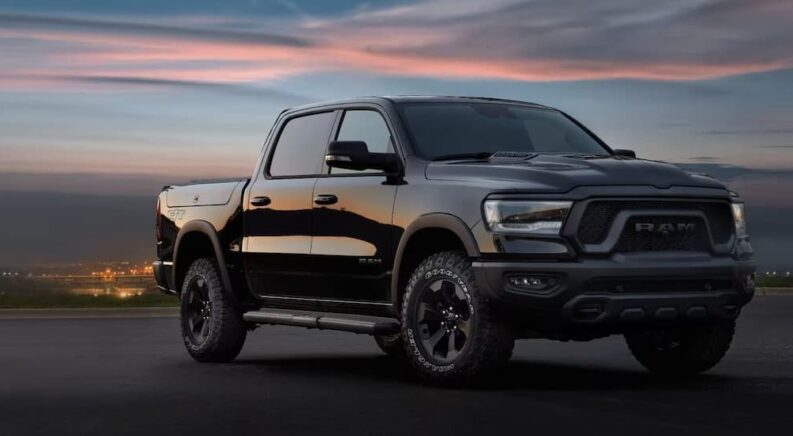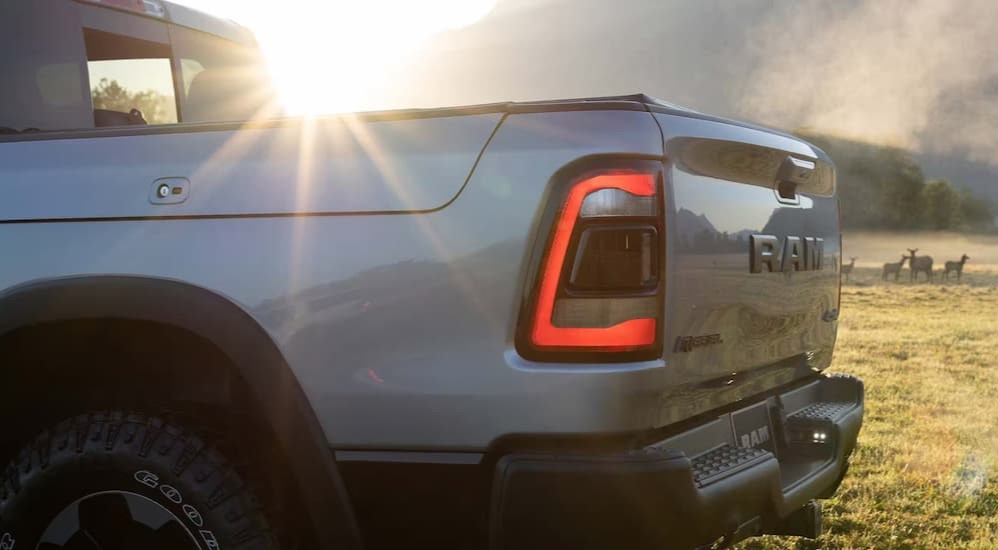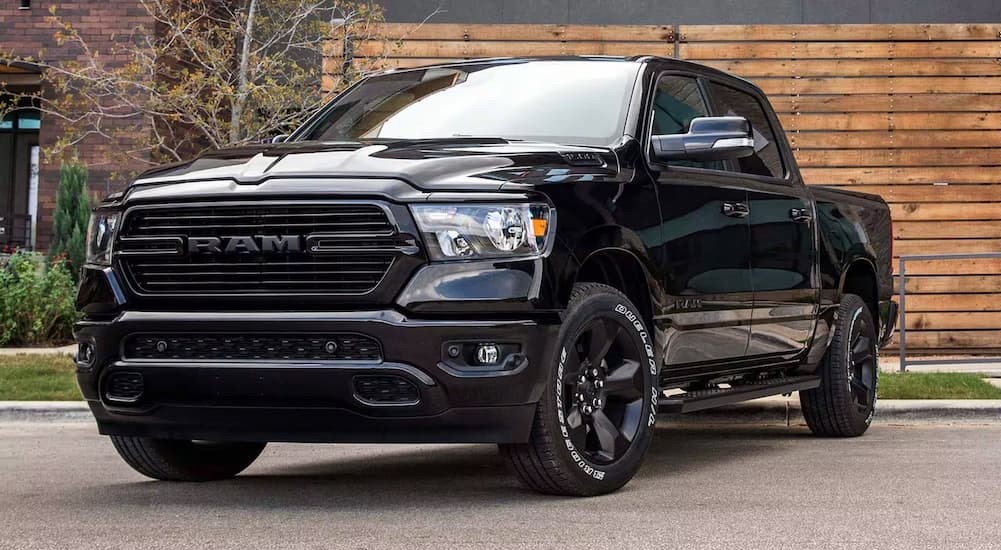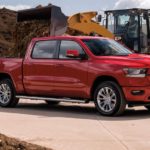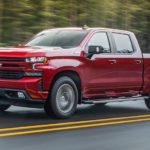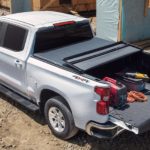In the competitive realm of full-size pickups, the RAM 1500 goes head-to-head with the Chevy Silverado 1500 for the hearts of buyers. The similarities go much deeper than just sharing the designation “1500.” Both trucks offer a range of features that improve comfort and driveability while also enabling them to get some of the toughest truck jobs done, from hauling to towing to heading out across tough terrain. But RAM and Chevy have followed different paths regarding style and technology, such that there are notable differences between them, too.
So, if you’re searching for a RAM 1500 for sale and wondering how it stacks up against its bow-tie-badged competition, you’ll find two well-matched competitors. Luckily, if you lean toward RAM style or performance, or perhaps you’re from a family that has always been a fan of RAM trucks going back to when they were still part of the Dodge division, you’ll find that the RAM 1500 legitimately edges out the Silverado in a number of key areas.
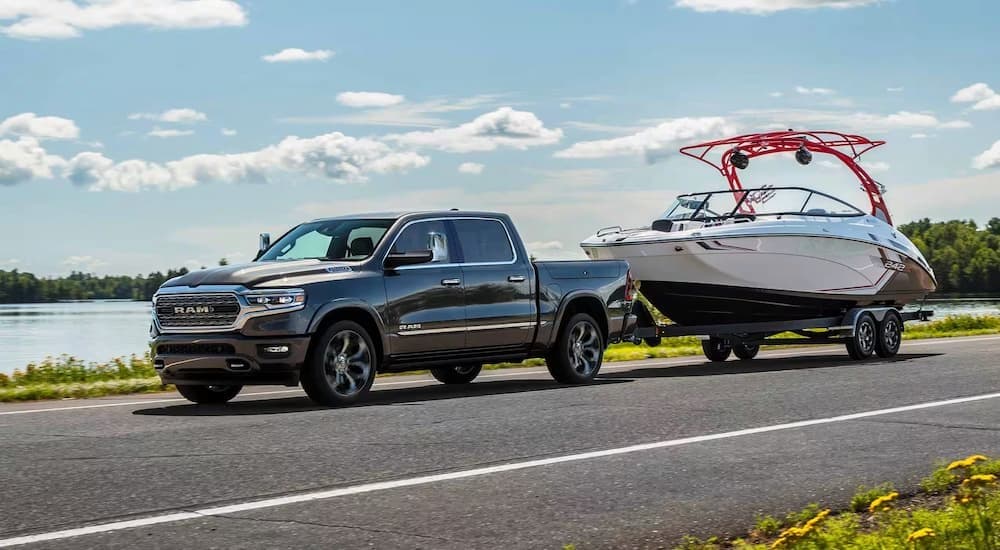
Under the Hood
Let’s start with an area where Chevy can’t match the RAM 1500: hybrid engine technology. That’s because the RAM 1500 has it, and the Silverado 1500 currently doesn’t. Specifically, the RAM 1500 offers two engine choices–a Pentastar V6 and a HEMI V8–fitted standard with RAM’s eTorque technology, a mild hybrid system designed to save fuel while boosting torque. eTorque is a testament to RAM’s technological leadership in the full-size pickup class.
The eTorque system uses regenerative braking to capture energy from the crankshaft as the truck slows down, sending that energy to a 48-volt lithium-ion battery pack that powers a 12kw motor/generator. So first, the truck’s gasoline engine converts fuel to energy to accelerate the truck to speed. Then, the eTorque system recaptures some of that energy during deceleration, energy that would otherwise be wasted.
This isn’t a full hybrid system such as those found in economy-minded cars like the Toyota Prius, cars which have large batteries and electric drive motors that can power the vehicles on their own up to a certain speed. Instead, the RAM 1500’s mild hybrid eTorque system’s electric motor recharges the regular battery, meaning the engine doesn’t have to expend energy doing that, and it provides supplemental power and torque during acceleration.
The electric motor also enables RAM’s Multi-Displacement System (MDS), found on trims with the eTorque-equipped 5.7-liter HEMI V8 engine, to operate in four-cylinder mode for longer. Plus, in both the Pentastar V6 and HEMI V8 eTorque engines, the motor powers the RAM 1500’s stop/start system, so the truck doesn’t waste fuel idling at red lights.
The 3.6-liter Pentastar V6 is the smaller of the two eTorque-equipped power plants. In addition to eTorque, it uses wide-range variable valve timing, along with two-step variable valve lift, to adapt its power output to each driving situation. This results in 305 maximum hp and 273 lb-ft of torque, good for a 7,730-pound tow rating when properly equipped with a towing package. Even more impressively, it gives Pentastar-equipped RAM 1500 trims a class-leading payload capacity of up to 2,300 lbs. That’s more than a ton from a half-ton class truck—not too shabby.
The larger of the two eTorque powertrains is the 5.7-liter HEMI V8. In this engine, eTorque provides a torque boost of up to 130 lb-ft for a maximum torque of 410 lb-ft. This goes along with 395 hp. This gives it a best-in-class hybrid tow rating of 12,750 lbs. In addition to eTorque, it also utilizes variable valve timing along with Fuel Saver Technology for greater fuel efficiency despite its tremendous capabilities. Chevy offers one Silverado trim with a higher tow rating at 13,300 lbs, but you have to step up to their pricey DuraMax diesel engine to get it.
What’s the RAM 1500 with eTorque like to drive? Well, AutoBlog has driven the 2024 edition of the RAM 1500 with both engines. Their review says, “Acceleration from the eTorque-equipped V8 is similarly buttery smooth and impressively quiet,” mentioning that there’s also very little noise from the stop/start system. It says the system is equally unobtrusive in the V6, and “…you’ll be surprised at just how capable the Ram can be with only six cylinders,” noting that it’s especially impressive while towing.
Chevrolet doesn’t offer anything that’s the equivalent of eTorque in the 2024 Silverado 1500. It offered a mild hybrid system called eAssist for two years starting in 2016 but subsequently discontinued it. eAssist worked similarly to eTorque, using regenerative braking to create an electric power boost and also using stop/start technology and cylinder deactivation to save fuel. While eAssist is no longer around, the Silverado still uses stop/start technology across its model range. But there’s nothing in the Silverado for 2024 that could properly be called a “hybrid,” mild or otherwise.
Fuel Economy
One of the main points of driving a hybrid is fuel economy, so how do the eTorque-equipped RAM 1500 and the non-hybrid Silverado 1500 compare on that score? Chevy seems to have gone the route of trying non-hybrid approaches to maximizing fuel economy since it dropped its eAssist system. Can they beat RAM on this measure?
Let’s start with the most fuel-efficient models of both trucks since buyers shopping for these trims will have efficiency in mind. Checking fueleconomy.gov, the US government’s official website for reporting EPA-derived fuel economy averages, a side-by-side comparison of the RAM 1500 with the Pentastar V6 and the Silverado 1500 equipped with the 2.7-liter TurboMax four-cylinder shows the RAM achieving a combined 22 MPG average of city and highway mileage. The Silverado, however, is rated at 20 MPG combined. Advantage: RAM. The comparison notes that the annual fuel cost for the RAM is $2,450, and for the Chevy, it’s $2,700. Over five years, that would add up to $1,250 more to fuel the Chevy than the RAM.
Running the same comparison using the RAM 1500 with the 5.7-liter HEMI (noted as a hybrid by the website) and the Silverado 1500 with Chevy’s 5.3-liter V8 shows the HEMI-powered RAM averaging 20 MPG combined, while the V8 Chevy only gets 18 MPG combined. Annual fuel cost for the RAM also undercuts the Chevy by a score of $3,000 versus $3,150.
What’s remarkable about both comparisons is the fact that the RAM’s engines are larger in both cases. In the case of the two trucks’ base engines, the RAM 1500’s Pentastar V6 even has two extra cylinders compared to the Silverado’s turbo four. This is a testament to the technological edge inherent in hybrid drivetrains.
All-Around Driving Experience
Modern trucks are about much more than just raw towing, payload, and fuel economy numbers. The full-size truck segment has evolved to be every bit as sophisticated as passenger cars and, indeed, are often driven as much as daily drivers as they are as work trucks. So which truck is better to live with, day in and day out?
AutoBlog loves the RAM 1500. It notes that even though some of its rivals have newer designs than the RAM, which was last redesigned in 2019, “…the 2024 RAM 1500 remains our favorite in the class. Its sophisticated ride and classy interior give it a leg-up over the Ford F-150, Chevrolet Silverado, GMC Sierra, and Toyota Tundra.”
Motor Trend goes even further, noting that it awarded the first year of the current generation its 2019 Truck of the Year Award and that it “continues to be a highly recommendable vehicle.” They particularly like its available features, its premium interiors, its large touchscreen, and numerous storage features.
How does Motor Trend feel about the Silverado 1500? They compliment its range of engines and the fact that the four-cylinder can actually motivate a full-size pickup. They mention that the interior was extensively redesigned in 2022 but state, “…entry-level models carry on with the unsightly pre-refresh cabin.”
The Verdict
Critics and buyers seem to agree: both the RAM 1500 and Silverado 1500 are worthy full-size trucks. However, in some critical areas, the RAM has an edge. If you’re looking for a highly capable truck that excels in hauling and towing but won’t make you weep at the gas pump, the RAM is probably your best bet. Add in a smooth ride, premium interiors, and high-tech standard and optional features at every trim level, and the RAM’s reputation for being an upscale and sophisticated pickup seems justified. Try test-driving both trucks and see if you agree. We bet you will.

